Amigo Skate Cuba Interview with Rene Lecour
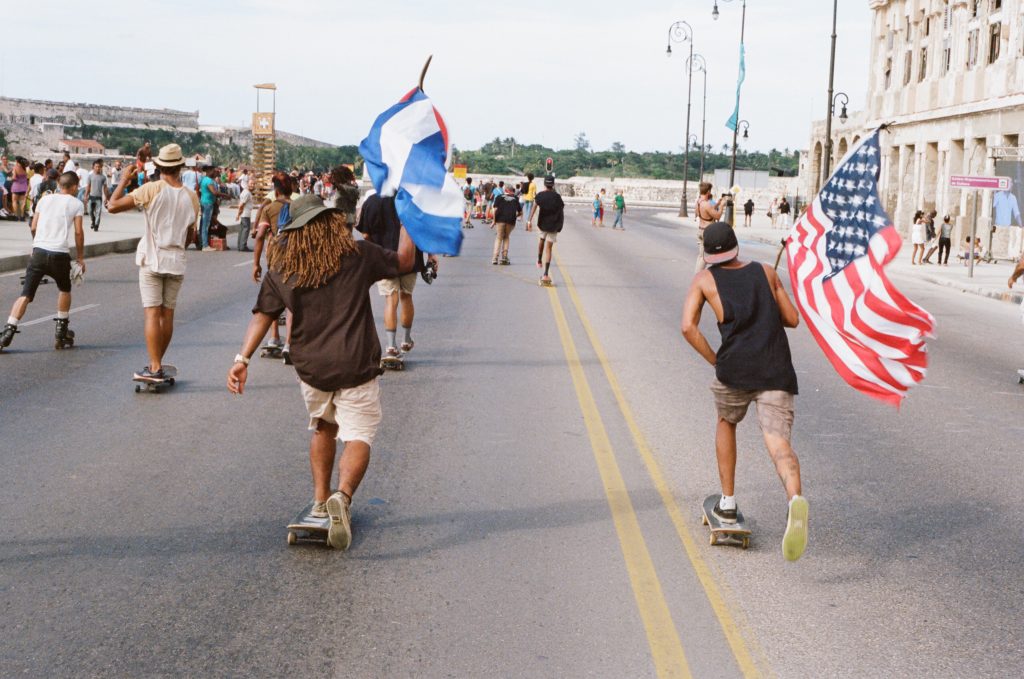
If you are in need of some motivation, look no further than the story of Rene Lecour and his son’s efforts to help grow skateboarding in Cuba through their organization Amigo Skate Cuba. Our good friend, Grant Fiero caught up with Rene to hear how it all started with nothing more than a few faked travel documents and donated gear.
What’s up Rene? It’s really rad to see what you are doing with Amigo Skate Cuba, what made you start the organization?
My son was the one that discovered that there was skateboarding happening in Cuba back in 2009. He was 15 years old at the time and found a video called “The Cuban Skateboard Crisis,” which was a documentary about what the Cuban skateboarders were going through. He freaked out when he saw the video and was like, “We got to go there, we got to go there!”. At this time, it was illegal to travel to Cuba, so my wife found us a little travel agency that fibbed on the documents, and we snuck into the country on our first trip. We filed with the U.S. Government saying that we were going to Cuba on a humanitarian mission, we didn’t hear back before our planned travel date, so we went anyway. It was amazing, we found this crew of 20 or 30 skaters, where 3 or 4 guys would be sharing one skateboard, and it made them a tight-knit crew. If one skater got a new pair of shoes, he would pass his old pair down the line.
Wow, that’s amazing that they were so tight-knit in that way, and looked out for each other.
Yeah, it was sick. We all fell in love with it immediately. Once we got back from that first trip, we had a letter from the U.S Government, and their answer was “No.”
That’s crazy! So that first trip you were already out there to donate used skate gear?
Yeah, we went there just to do that. My son begged us to take him. I was working at a skatepark at the time, and we already had something similar to Amigo based out of our house. We lived down the street from the skatepark, and we lived on the other side of the train tracks, which wasn’t the good side of the tracks. People would donate their old gear to us, and we would give it out to kids in the neighborhood. This idea came from Boards For Bros. Parents with money would give us their kids old shoes and decks, and we would give it out to the kids in our neighborhood, and this ended up turning into Amigo.
That’s amazing to hear how much you guys gave back to your community and that you made it work.
We had to figure it out for Cuba. No one wanted to go to Cuba at that time, we would ask people for donations, and they would ask if we were communists. It was crazy.
How did you go from the idea of re-purposing boards, to actually getting them distributed to skateboarders?
Originally I reached out to different companies and distributions, with the dream that they would send us new products to donate, but because Cuba was so isolated at the time, they didn’t want to get behind what we were doing because there was no payback for them. Their first question would be, “What’s the name of the skate shop there? You can do it through them.” But, skate shops don’t exist in Cuba. We were struggling to get new products, so we reached out to friends, and they started donating their used boards. We re-conditioned the used boards as much as we could because, with my American mentality, it was better to get a new board than a used board. But, once we got to Cuba, we realized there aren’t any skateboards here, so a used skateboard is still a skateboard. Re-purposing the boards happened out of necessity, and later on, we realized how rad it was that these boards were having a second life, and sometimes even a third life as we used broken boards to make art.

It’s really cool to hear how you helped give kids in Cuba access to skateboarding. What is it about skateboarding that made you want to share it with as many people as you can?
The impact it had on my oldest son is what made me want to share it the most. He co-founded Amigo with me and unfortunately passed away a few years ago. It was the change that I saw skateboarding make in his life. It was so mind-boggling to me. My son was a scrawny kid growing up; he never seemed to fit into any sports. When he was 11 years old, he asked me for a skateboard, and from the second, it was under his feet. It was like it was meant to be under his feet. It was crazy. When I saw how it lit him up, I started skating, so he had someone to skate with. When my son was around other kids who skated, his whole life changed. He went from being kind of lost to being driven, and that transcended over to everything in his life, as he was also an artist. It helped develop his character to be something completely different, and he ended up being a badass skater, he is still one of my favorite skaters today. Skateboarding can change your life, and it changes the way you look at things, it gives you a purpose when you didn’t really have a purpose. When I started working at the skatepark in Coconut Grove, and we were living in a neighborhood full of at-risk youth, we were able to take those kids in and watch that change kids’ lives, to where their homies were at that age of joining gangs, going to jail, and houses were getting shot up, but those kids were out of that loop because they were with us skating. Skateboarding saves lives.
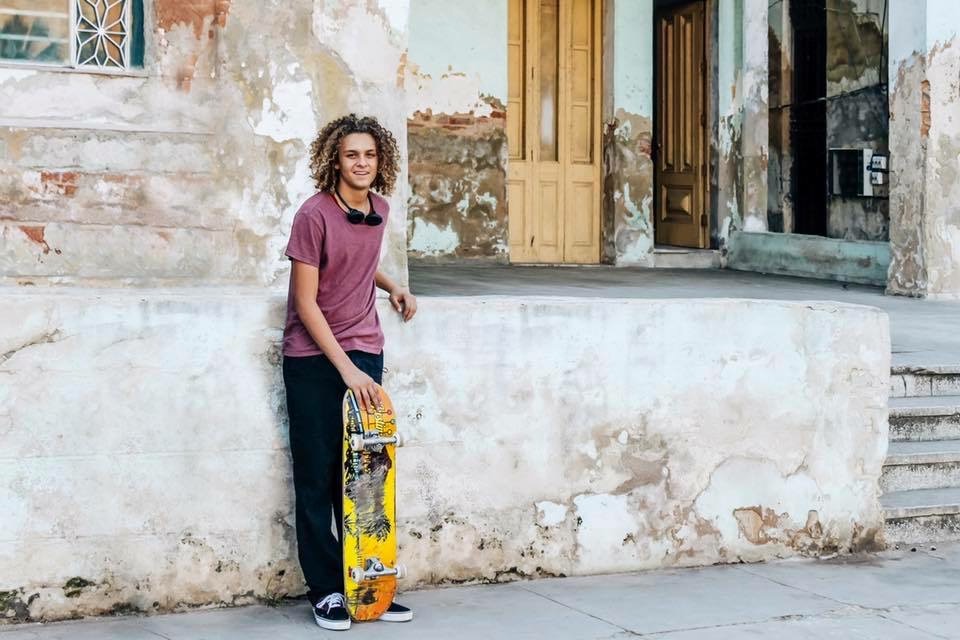
I’m sorry to hear about the passing of your son, but it’s great to hear that he was involved in Amigo from the beginning, and how much skateboarding did for his life.
When we went to Cuba the first time, we didn’t even know that there was going to be Amigo, but he did something on that first trip that paved the way for the way we were going to run shit on every trip. The first day we got there he went to skate with our friend Shane, when they came back a few hours later, my son had a different pair of shoes on, and a different shirt on. He had these messed up shoes on, and I laid into him because I had just bought him a new pair of Vans, I asked him, “Are you crazy? What’re you doing? Why would you do that?” and he said “Cause his (A Cuban skateboarders) shoes were shit, and mine were good, so I traded him. And sooner or later, you’ll buy me another pair of shoes when you aren’t mad at me anymore.” And I was like, dude, I’m an asshole, that was so pure out of him. I would tell this story on later trips, and it would get people stoked to give out their own stuff, and it turned into this weird contest where people would go on these trips and see who would come home with the least amount of their own stuff.
That’s amazing that he sparked that.
Yeah, man. I’m the face of Amigo, but it all came from him. Unfortunately, he’s not here to share it with me now, but everything he did is what I try to push forward.
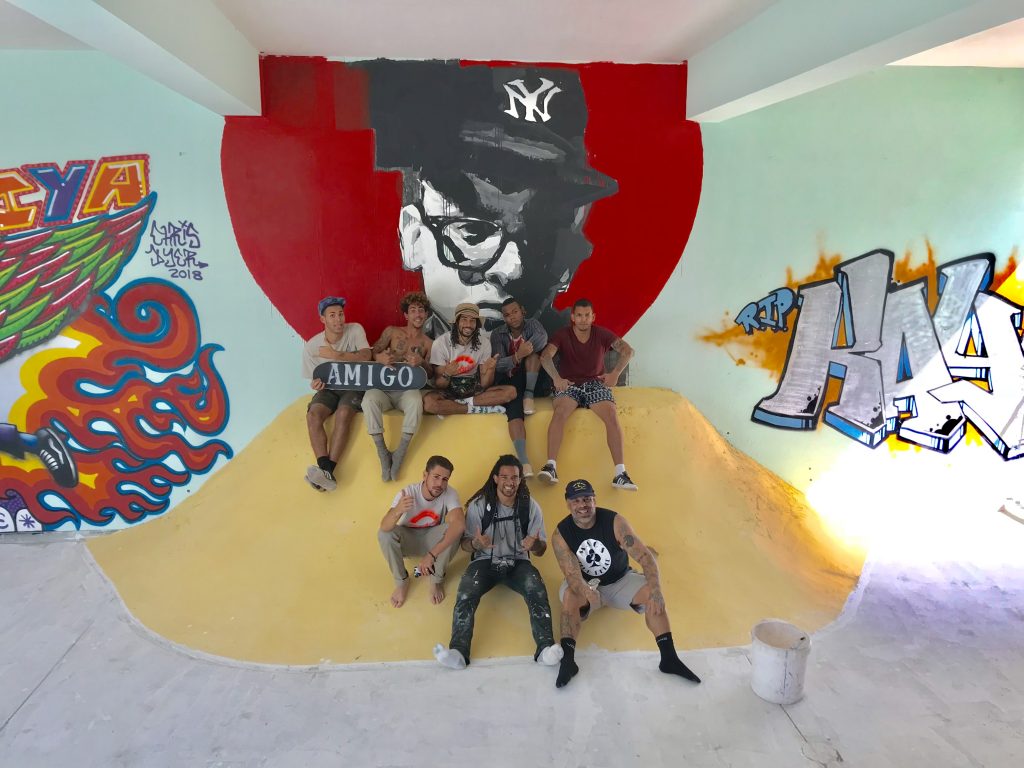
Yeah, it’s really cool to hear the impact he had. Have you guys worked any skate shops to collect used boards?
We’ve worked with Homage Skate Shop from New York, Boardertown Skate Shop in Arkansas, and many others. There are so many great skateboard charities out there; it’s impossible to ask anybody for anything twice. We might get help from a shop one year, and then not again for a few years. Our biggest help, by far, has been Generator Skateboard Distribution, they’ve been our longest supporter in terms of decks, they donate their blemished decks to us.
Many skateboarders look at used boards as trash, was there a specific time you realized that these boards can have a second life?
Yeah, absolutely. Like I mentioned, working at the Coconut Grove skatepark I noticed it first hand. Coconut Grove is a city in Miami, and it literally has a dividing line between a primarily wealthy neighborhood, and one of the poorest neighborhoods in Miami. The skatepark was on the wealthier part of town, and we would see the kids from the poorer area come to the skatepark and look in through the fence, and the owner of the park was cool, and would let us sneak these kids into the park for free, even though you had to pay to skate there. We noticed that the rich kids would get a new deck, and throw their old deck into the garbage. So I started collecting all the used gear, putting it together, and giving it to the kids in need. Next thing you know, we had like 14 or 15 kids from the hood skating at the skatepark. Something that had zero value to one kid, was the most important thing in another kid’s life. I don’t even know if I can take credit for that, maybe it was something that was already happening there, but everyone that worked there was doing it, looking for people’s old product that could be re-used.
That’s rad that you guys looked out for the kids like that. Do you have any advice or anyone thinking about starting an organization of their own to help re-use/re-purpose skate gear and help get kids to start skating?
Yeah, I think the biggest resource in doing that is younger skaters. Believe it or not, they are the people that understand that mission more than anyone, which is mind-blowing. I don’t know why, but they really get it. We got more donations on our first trip from skaters that were under the age of 12 than any other age group, which is crazy, but they literally understood that there’s another little kid somewhere else that could use that skateboard.
That’s really cool that it clicked in their head like that, and they were willing to donate.
Yeah, like I said, when we realized we weren’t going to get any skateboard company behind us, we realized we didn’t need it anymore, that we could collect used gear by just going out to our circle of friends.
Do you have any standout stories from donating these re-purposed boards to skateboarders in Cuba?
Yeah, dude, I have a really big standout story actually. About five years ago we were flying the charter Airlines to Havana, and I got an email from the president of the airline who found out what we were doing, and he wanted me to come into his office to speak to him. I thought maybe we were in some type of trouble, but I went to his office. His son had passed away, and he told me he still had his son’s skateboard, but he said that it wasn’t in good shape. He told me “If you’d be willing to take it to Cuba for me, it would make me really happy to know that something that my son loved so much was going to have another life.” and I was like “Damn dude, that’s super badass, yeah, go get me the skateboard bro.” So I did, I took it to Cuba, and he was right, the board wasn’t in great shape, but it was totally skateable. Once I was in Cuba, I handed a kid the board and didn’t even tell him the story behind it. I just asked him if I could take a picture of him with it to send it to my friend, and he was so excited he ran home to get his dad, and his dad came over to thank us for giving him the board. Fast forward 5 years, and he’s one of the best skateboarders in Havana.
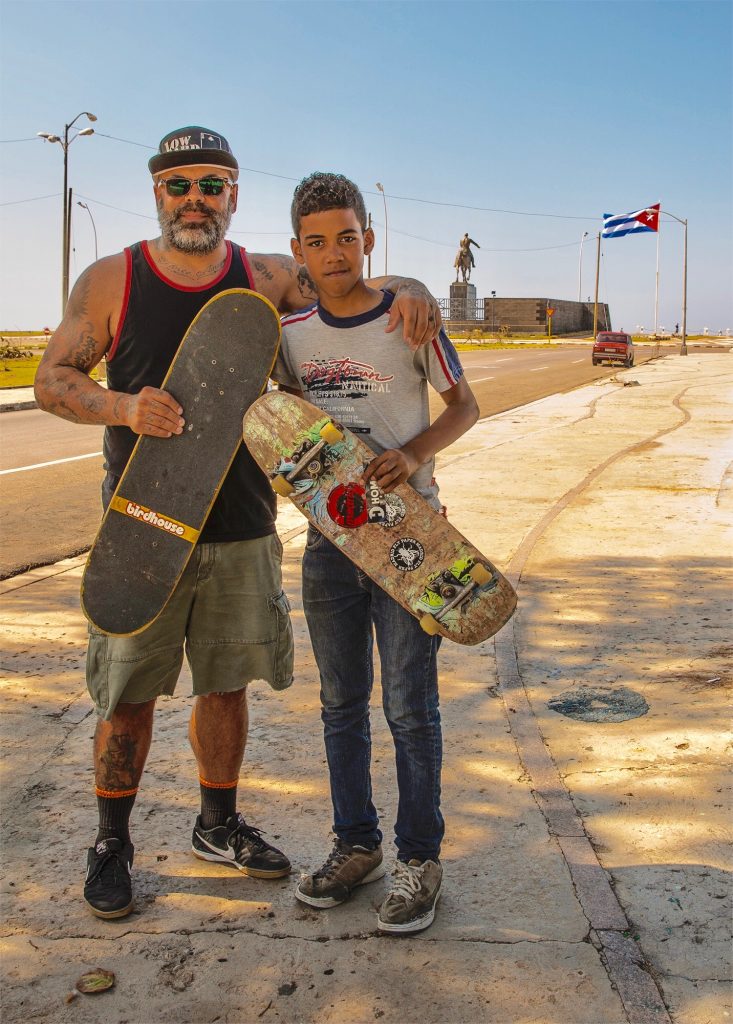
Wow. That’s a great story. Thank you for sharing that.
Yeah man, here’s the thing, you always hear “Skateboarding saves lives”, it’s not even the skateboard that saves lives, it’s the community that saves lives.
Definitely, it’s all about the community. How has the skate scene in Cuba evolved as you have helped more kids access skateboarding?
In the beginning, there were a lot less resources, so if someone broke their board, you wouldn’t get another one for 3 or 4 months. Because of that, kids wouldn’t really push themselves their hardest, they didn’t want to skate a set of stairs and snap their board, and if they snapped it, they would nail a 2×4 to the bottom of their board to keep skating it. We were amazed at how these guys could skate under any circumstances. Everything was DIY. The newer generation of skaters in Cuba isn’t used to that anymore, when their board breaks, they wait for someone to give them a new one, they lost a little bit of that creativity I guess. They have more access to things now because there’s more people donating to them, a lot of the kids now progress much faster than the kids older than them did. Now, if a kid breaks a deck, he doesn’t have to wait 3 months for a new deck, he only has to wait 2 weeks. And, the kids have their own boards now, they aren’t being shared between 3 or 4 different kids.
That’s rad to be able to see the progression of skateboarding, and also the access to skateboards down there. You’ve mentioned that the Cuban government isn’t very fond of skateboarding in general, what kind of challenges has this brought into the process of donating boards?
Well for skaters in everyday Cuba, it means that you could be skating down the street, and a cop will come and grab you and tell you that there isn’t skating allowed in that area, and they will just take your shit, or give you a ticket, or if you piss them off they will take you to jail. I have seen a kid show up at a contest with no board because his was broken, borrow his buddies board, win the contest, leave with a brand new board, and have that board taken away as he skated home. Skateboarding is deemed as something that American’s, anti-government, and outlaws do. The government feels like we are there to conduct some kind of subversive activities, and that we are giving boards away to instill capitalistic values on the youth, and that the U.S government has sent us there to cause chaos.
Wow, that’s a crazy response from the government.
It’s gnarly. We’ve been told to not come back for Go Skateboarding Day, and that if we did, we would suffer the consequences. We started doing Go Skateboarding Day in Cuba, which had never been done before because it’s illegal in a communist country to gather groups of people. We did it for 5 years, and it got bigger each year until a few hundred people were involved, and the cops didn’t like that very much.
That is gnarly. It’s sad that the government doesn’t realize that you guys are just trying to help the kids.
Yeah, it’s definitely gotten better, and thank God there’s other people and groups down there doing what they do. But even as good as it’s gotten, it’s scary, there are no rules.
You also make art pieces from recycled skateboards, is this something you mainly do with boards that are too beat up to be skated again?
Yeah, exactly. Once again that goes back to my son, after our first or second trip we needed to fundraise to go back. He cut a broken board out into a skull, did a fundraiser, and people really dug it.
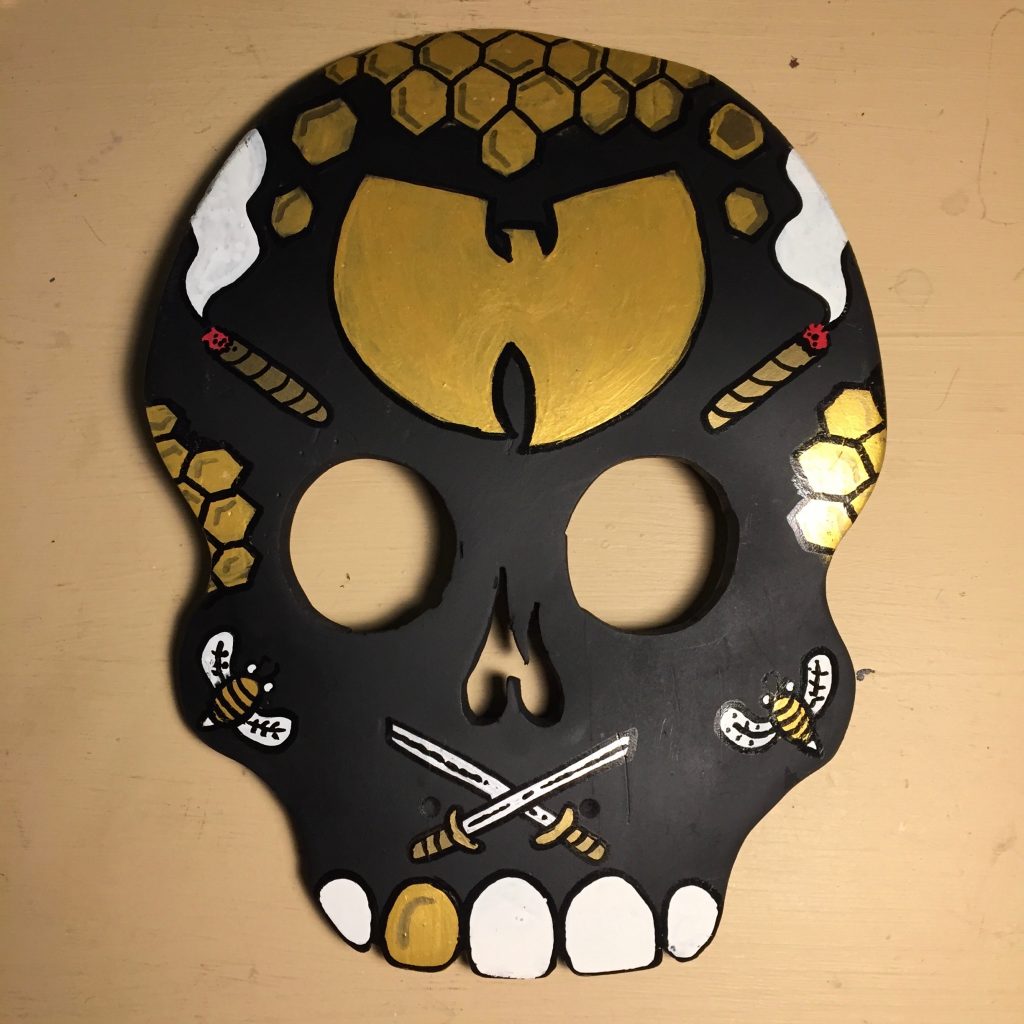
That’s really cool that re-using the board for art supports the whole mission of helping kids access skateboarding.
It is cool when you think about how it’s something that was getting tossed into the garbage. Someone could toss a used board into the trash, I could pick it up, take it to Cuba, and one or two people will skate it, then it breaks, and that broken board gets used again to restart the whole process again. It’s like reincarnation in skateboarding.
Wow, yeah, that’s really cool. It’s so great to see you guys re-use decks, and like you mentioned, giving them a second and even third life.
Yeah, and even the entertainment value that comes from the board, three different people skated it, someone else created art from it, and that art is appreciated by someone else it was sold to. Think about how much use that piece of wood got.
Yeah, that’s a great point. Thank you for sharing about Amigo Skate Cuba, and your experiences, it’s so cool to see how much you guys are helping grow the skate scene down in Cuba.
Thank you man, I hope I didn’t ramble too much (Laughs)
For more information on Amigo Skate Cuba follow them @AmigoSkateCuba

